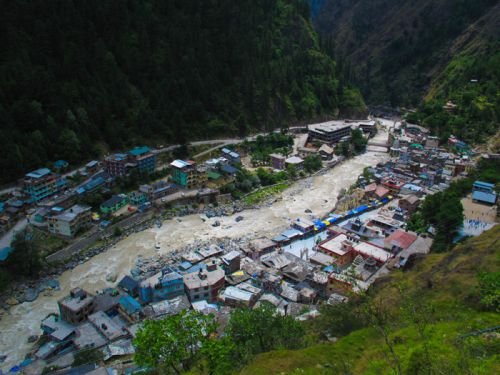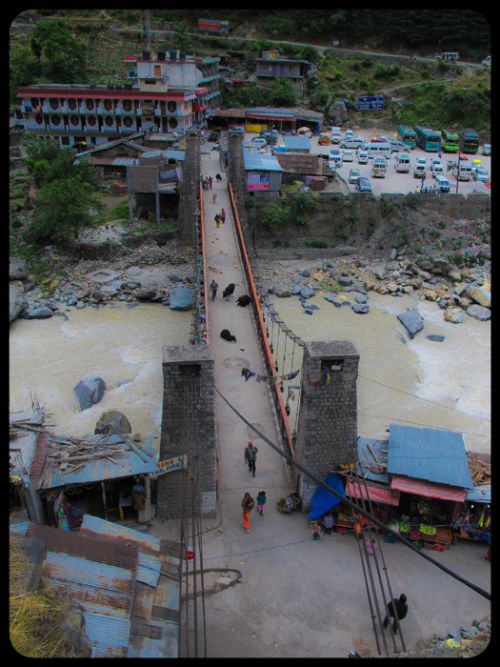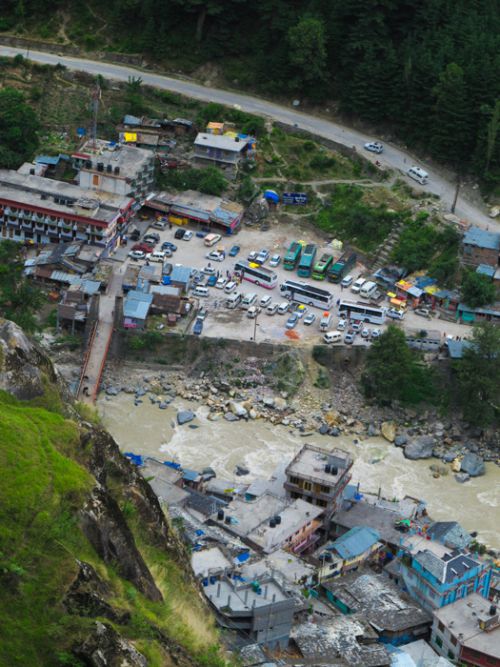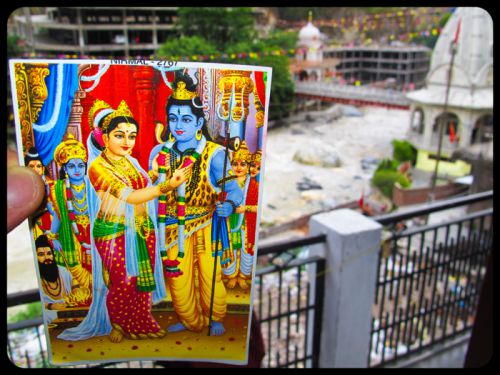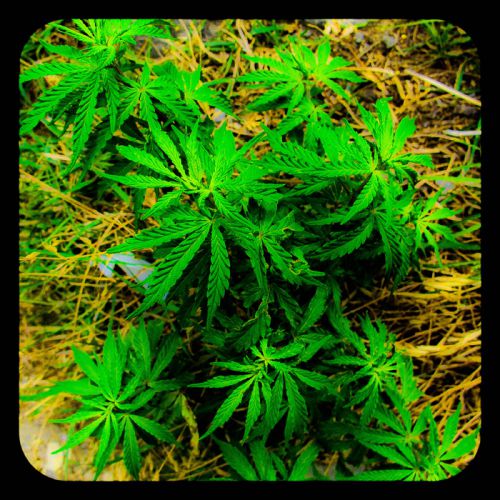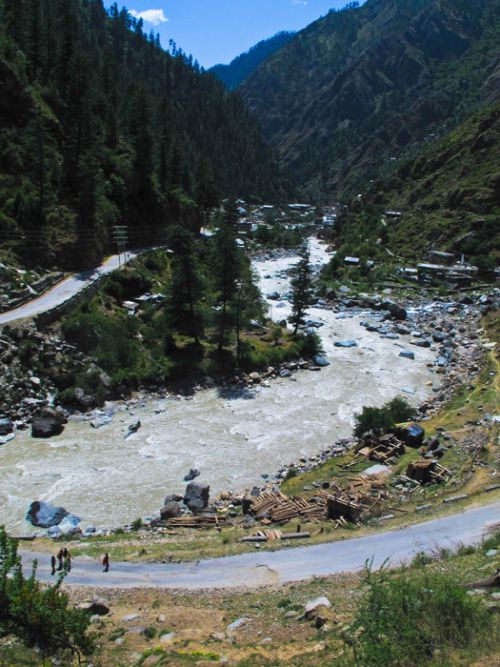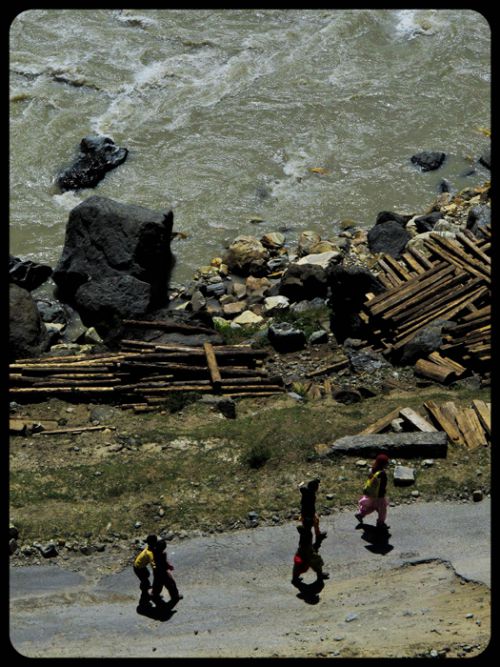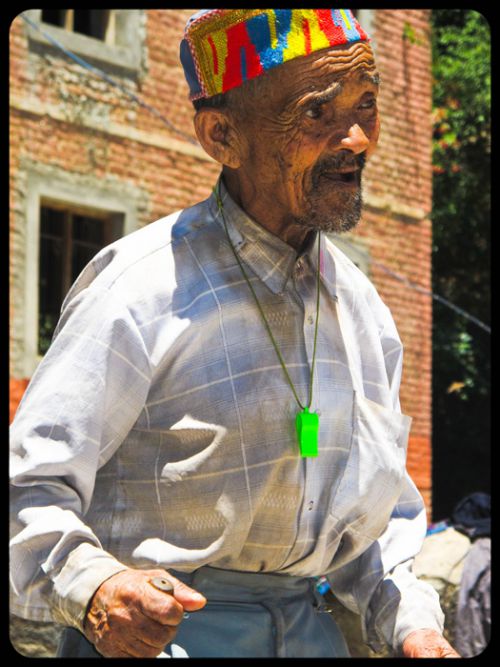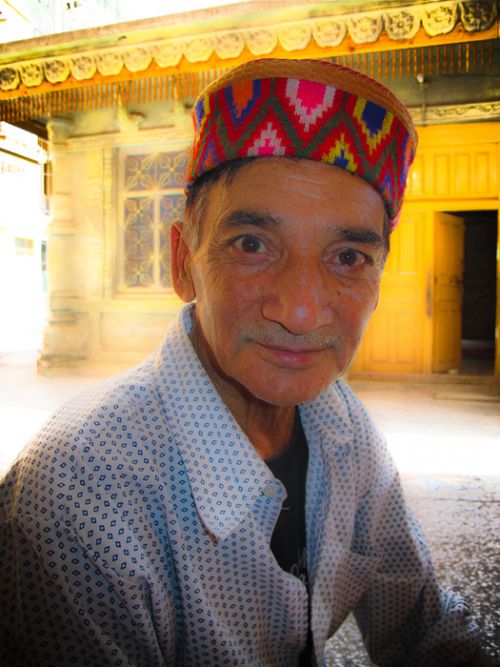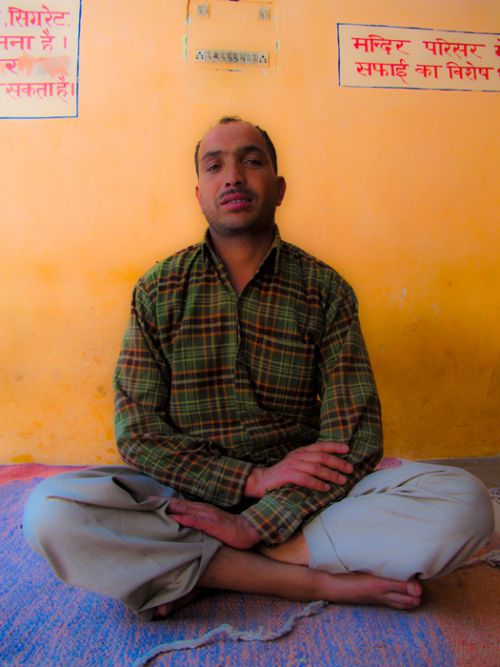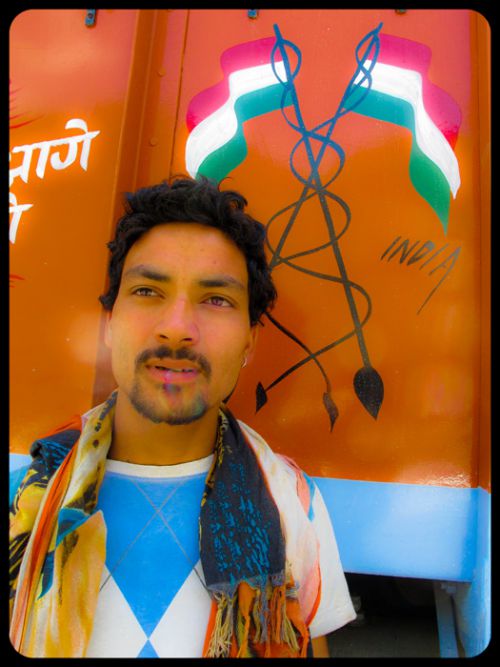17 ManiKaran - Himachal Pradesh
Je quitte l’eau à 40° des thermes de mon hôtel à Manikaran, Himachal Pradesh. Je me relaxais des coups du voyage. Il m’a fallu dix-huit heures de bus pour faire Delhi jusqu’à ici, environ 550 kms. La route s’est pourtant faite en bus Volvo (le top class en Inde) mais Volvo n’a pas pensé refaire les routes !!! J’exagère un peu mais si la route ne me propulse pas trop de haut en bas, elle me propulse pas mal de droite à gauche. De quoi se rappeler son dernier repas !
J’étais donc dans l’eau chaude à défaire certains nœuds musculaires et apaiser certains hématomes, mais aussi à me défaire des lourdeurs des deux derniers mois sans sortir de Delhi, dans la chaleur, la poussière et le travail (Quelle horreur ! Hein?). Et oui j’ai décidé de m’offrir cette parenthèse dans la chaleur des creux de la Grande Montagne, et malgré pas mal de choses restant à faire à Delhi, l’option « Départ » restait ce qu’il y avait de mieux à faire. Il y a des décisions que l’on ne peut prendre que soi-même.
Manikaran, le village de ce coté, le parking pour véhicules en face et en haut la route
pour les neiges éternelles. // // Manikaran, the village on this side, the car park on the other side of the bridge and the road leading to the eternal snows above.
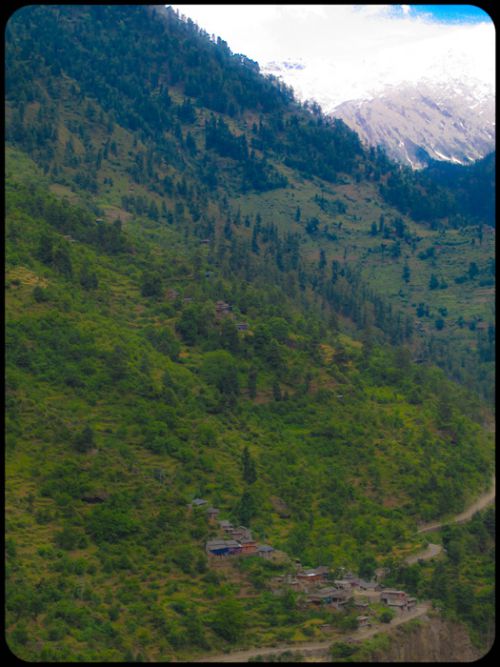
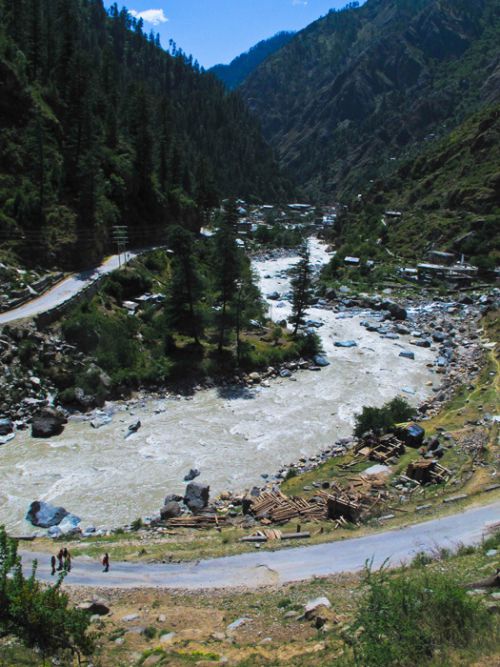
D`un coté les neiges éternelles, de l`autre Manikaran
On one side the eternal snows, on the other Manikaran
Depuis si longtemps l’envie pressait !
La Parvati vallée tient son nom de la rivière qui la descend entre de multiples passages verticaux, dans une certaine luxuriance de ces montagnes sédentaires. La vallée héberge quelques villages et maisons perchées sur des flancs de montagnes, quasiment inaccessibles. Le décor a pris la rudesse et (à Manikaran au moins) a laissé la douceur aux habitants.
Manikaram est un des villages le plus en amont de la vallée, il était ancestralement connu comme lieu de culte shivaïte mais l’Indépendance de l’Inde en 1947 refaçonna quelque peu sa destiné. Avant tout, au début fut la légende (selon le Brahamand Puran) :
« La déesse Parvati se baignait lorsqu’elle perdit sa boucle d’oreille. La Terre Mère ne pouvant porter ce bijou il alla droit dans l’autre monde (Patal Lok) et fini en possession du Serpent (Seshnaga) Seigneur des bijoux. Shiva envoya ses hommes retrouver cette boucle d’oreille mais en vain. Shiva était dans tous ses états, il ouvrit son Troisième œil. Le monde en entier frissonna. Pour sauver le monde de la destruction, le Seshnaga renvoya les bijoux vers l’extérieur de la terre accompagné d`un sifflement, ainsi que de nombreux autres bijoux. Aujourd’hui encore des petites perles marrons se trouvent parfois dans le lit de la rivière, il semble que le Seshnaga continue à nous envoyer des bijoux depuis son royaume sous-terrain. »
Voila pour la légende de l’endroit.
L’autre histoire qui n’est pas une légende est celle de Sant Shri Narayan Hari qui en 1947 déménagea de Kamalpur (Pakistan) avec sa famille pour s’installer à Kullu, un autre village de montagne à environ 50 kilomètres de d’ici. Il migra par ci et par là pour finalement se poser à Manikaran. Sant Shri commença à faire quelques travaux sur un terrain laissé à l’abandon où n’existait que quelques sources d’eaux chaudes, à l’endroit actuel du Gurudwara (édifice religieux sikh). Son dévouement pour autrui, sa gentillesse le firent rapidement connaître, il gagna quelques riches dévots, l’importante quantité d’argent qui se déversa sur l’endroit fut intelligemment dépensé, et une énorme structure immobilière vit doucement le jour. Elle peut accueillir aujourd’hui jusqu’à 4.000 pèlerins simultanément. Et voilà donc aujourd’hui l’intérêt majeur de Manikaran. Toute le journée les bus, taxis et 4 X 4 bondés déboulent dans l’endroit, par des routes plutôt déglinguées, pour y déverser des flots de touristes principalement sikhs et du Penjab voisin. La communauté sikh est d’autant plus bien accueilli qu’elle est une manne financière prodigieuse : 2% de la population indienne qui gère 30 % des richesses nationales. Ils ont clairement un niveau de vie supérieure à la moyenne indienne.
Manikaran est donc pris entre les histoires hindous de Shiva, de Parvati et celles du saint sikh qui assura la prospérité de ce village un peu perdu au fond de la vallée mais sous la présence éclairante des neiges éternelles, un peu plus loin, un peu plus haut.
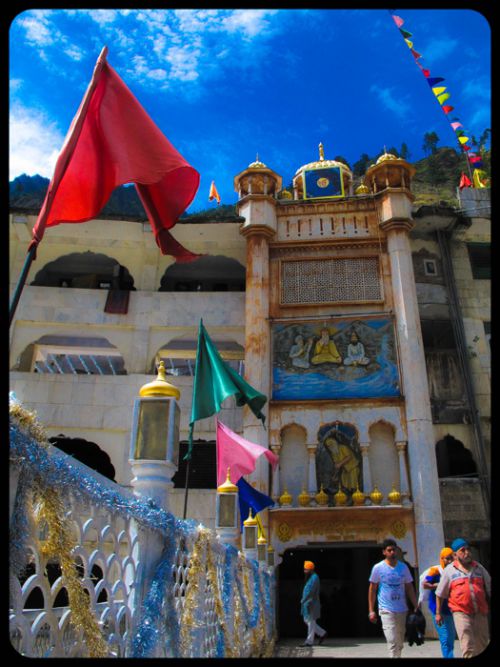
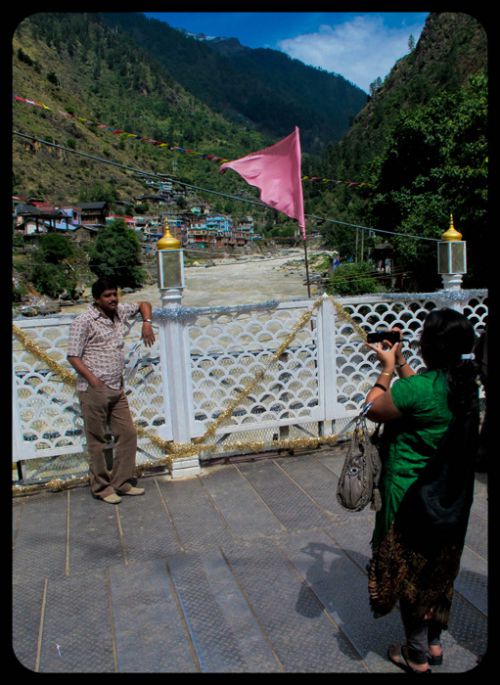
L`entrée du Gurudwara et quelques touristes qui immortalise l`instant.
The entrance of the Gurudwara and some tourists getting pictured.
Shiva & Parvati posant avec en arriere-plan le Gurudwara et la riviere Parvati.
Shiva & Parvati pictured before the gurudwara and the river
Dans la région, que la nature est belle et généreuse !!
In the area the nature is so beautiful and generous !!
I leave the 40° thermal waters of my hotel in Manikaran, Himachal Pradesh. I was relaxing, getting rid of the hurts of the road. It needed eighteen hours of a bus trip to go from Delhi to here, about 550 kilometers away north. The way was made in a Volvo bus though (the very must in India) but Volvo did not renew the roads !! I exagerate a little bit, though if I haven’t been too much sent up and down, I have been sent quite much from left to right. Enough to remind your last meal !
So I was in the hot waters to unknot some muscular knots as well as I was APAISER some hematoms, as well as I was getting rid of the weights of that stay of 2 months in Delhi non-stop, in the heat, the dust and while working !!! Yes I decided to offer me some days in the heat of the Big Mountain’s waters, and even if quite a lot is left to do in Delhi, the option « Departure» was the best to take. There are decisions that we can only take ourselves.
La vallée, Maniukaran et l`humain, tout petit
The valley, Manikaran and the humans, so small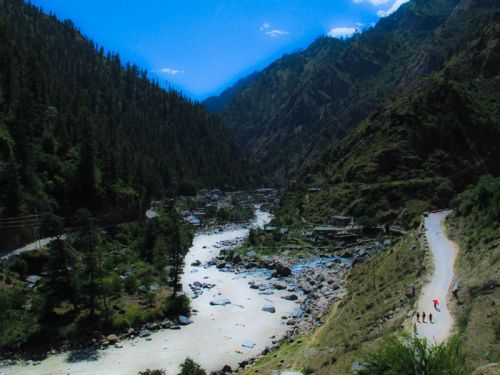
For so long I had the will to come !
The Parvati valley got its name from the river that goes down between its steep slopes, in the somehow luxuriance of these settled mountains. The valley shelters a few villages and houses perched on the slope of the hills, almost unreachable. The landscape took the harshness and (as far as I could see) left the softness to the inhabitants.
Manikaran is one of the most upriver of the valley, it was known for very long as a strong shivaite spot but in 1947 the Independance changed a bit its destiny. Nevertheless everything here starts with a legend, here it comes (following the Brahamand Puran) : «The goddess Parvati was bathing in the river when she lost her ear jewel. As Mother Earth could not hold such a wonder, the jewel went straight to the other world (Patal lok) to the Lord of the Jewels : The snake Seshnag. Shiva sent some of his men to search for it but they failed in their task. Shiva was upset, he opened his Third Eye. The whole world was in fear of the mass-destruction. To save the world from its end, the Seshnag sent back to the outside world the jewel and many more. Today still, in the river are found some brownish beads, it seems that the Seshnag is still sending us some jewels from its «other world».
Here is for the local legend.
The other story is not a legend. It is the life and achievement of a sikh man, Sant Shri Narayan Hari who moved with his family at the Independance in 1947 from Kamalpur in Pakistan to the region of Kullu, Himachal Pradesh, which Manikaran is part of.
He moved here and there before settling here. Sant Shri started some building works on a neglected piece of land with a few hot springs, where is the actual Gurudwara (sikh religious place). His selfless service, his natural kindness as well as his dedication in his faith won him a great name and fame. A few rich devotees further, the Gurudwara was becoming a place of importance for the sikh community. Nowadays the Gurudwara can host up to 4.000 pilgrims at a time. And here is today the main interest of this village. All day long, buses, taxis and 4x4’s reach the place through damaged and small mountains’roads, bringing lots of tourists, mainly sikhs and from the neighbouring state of Punjab.
The sikh community is very welcome, especially as this group represents a certain money power : they are 2 % of the indian population and they manage 30 % of the country’s economy. They clearly live above the indian average.
So Manikaran is floating between hindus stories of Shiva, Parvati and the ones of the sikh saint who ensured the prosperity of this village, a bit lost in the remote depth of the valley but under the enlightning presence of the eternal snows, a bit further, a bit higher.
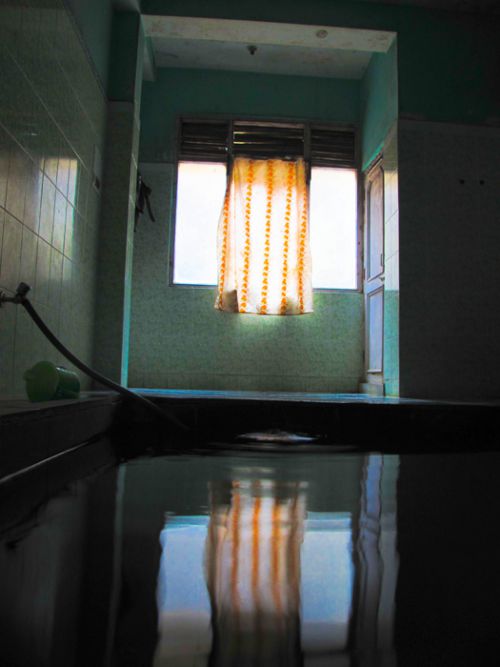
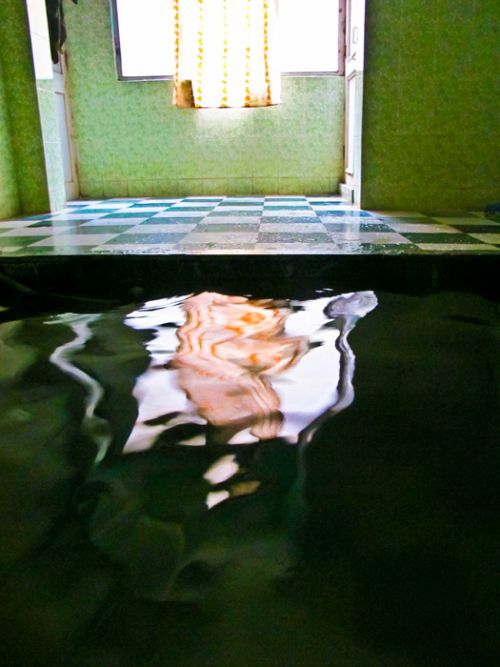
La salle "thermes" de mon hotel // // the "thermes' in my hotel
Un papi un peu largué avec son couvre-chef local et son sifflet
An old little "fool" from the village with his local hat and his whistle
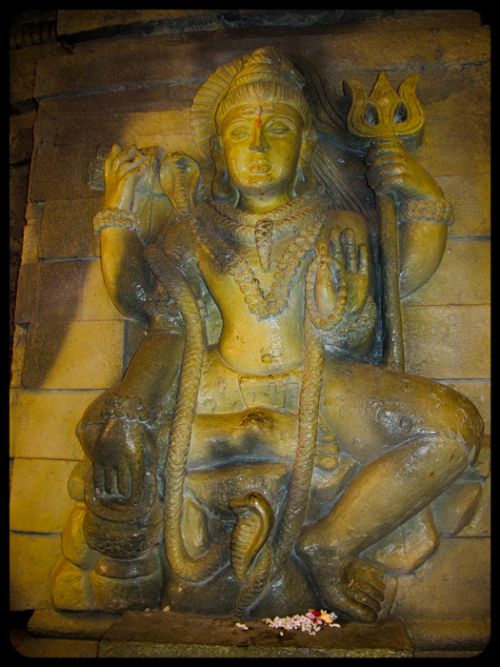
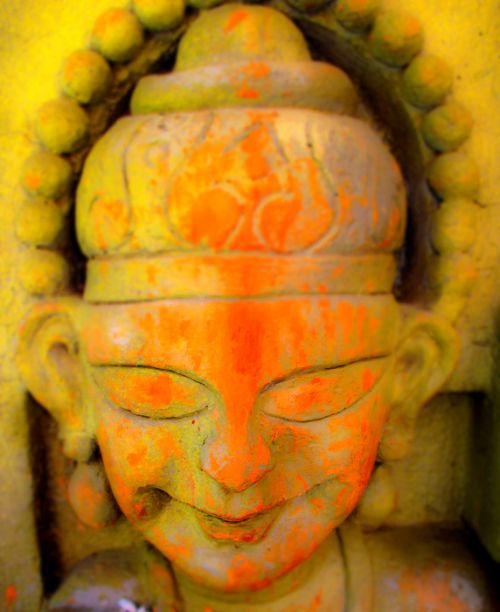
Temple de Rama, hommes de chair et de pierre // // Rama temple, Men of stones and flesh
Chauffeur de camion de l`endroit // // Local truck driver
PREVIOUS : 16 Flash`back Benares
NEXT : 18 Raj Tattoo in ManiKaran
PRéCéDENT : 16 Flash`back Benares
SUIVANT : 18 Raj Tattoo à ManiKaran
A découvrir aussi
- 09 Almora - Uttarakhand 18/02/2013
- 10 Delhi, toujours Imperial // Delhi, Imperial still 24/02/2013
- 18 Rajesh Kumar Pal, tattooist in Manikaran
Inscrivez-vous au blog
Soyez prévenu par email des prochaines mises à jour
Rejoignez les 90 autres membres

